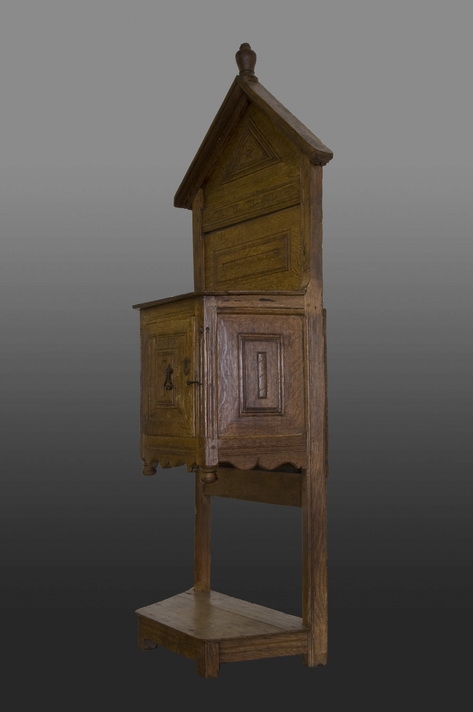Renaissance dressoir
Circa 1565
Northern France, porbably Brittany or Picardie
W 28.5" × H 74" × D 14.5"
Stock # MARH0221
SOLD
Northern French high-backed buffet of small proportions, with provincial Renaissance ornament. This diminutive buffet represents a rural interpretation of a complex and sophisticated furniture form of the 1560s. Its hybridized ornament fuses cutting-edge Renaissance approaches with more familiar Gothique designs. Tableted panels, chain motifs, stopped-flutes, and ogee scrolls are wholly of the Henri II period. Alongside, and superimposed upon, this progressive elements are traditional motifs such a lancets and a perpendicular trefoil. Construction is equally informal. The small size, economical ornament, and oak construction mark the buffet as a rural object. Most surviving French high-backed buffets are massive and elaborate affairs that reflected the high-status of their owners. This example is not only down-sized in every dimension, but is also configured with a three-sided rather than pentagonal front. The upper compartment is supported solely by the rear stiles, omitting the additional joinery involved in accommodating the secondary side stiles of most buffets. The gabled canopy also differs from the stand rectangular extensions seen on buffets, and is owes more the late Gothique than to the Renaissance for its inspiration.
The buffet survives in remarkable structural condition. Virtually all elements are intact and original. This includes the canopy, lower shelf, floorboards, applied moldings, shaped rails, turned pendants, hinges, escutcheon, and even the top final and the hook-and-eye closure of the door.
Minor repairs to joinery of lower shelf.
* Examples of Northern French joined furniture with similar Renaissance ornament is illustrated in Le Meuble Huat Normand, des Orignes à 1700, pp. 121-123, figs. 20-24.
* A similar Renaissance high-backed buffet of higher-Style and of walnut, but of closely related proportions and construction is illustrated in Monica Burckhardt, Mobilier Moyen-Age: Renaissance, p. 47.


